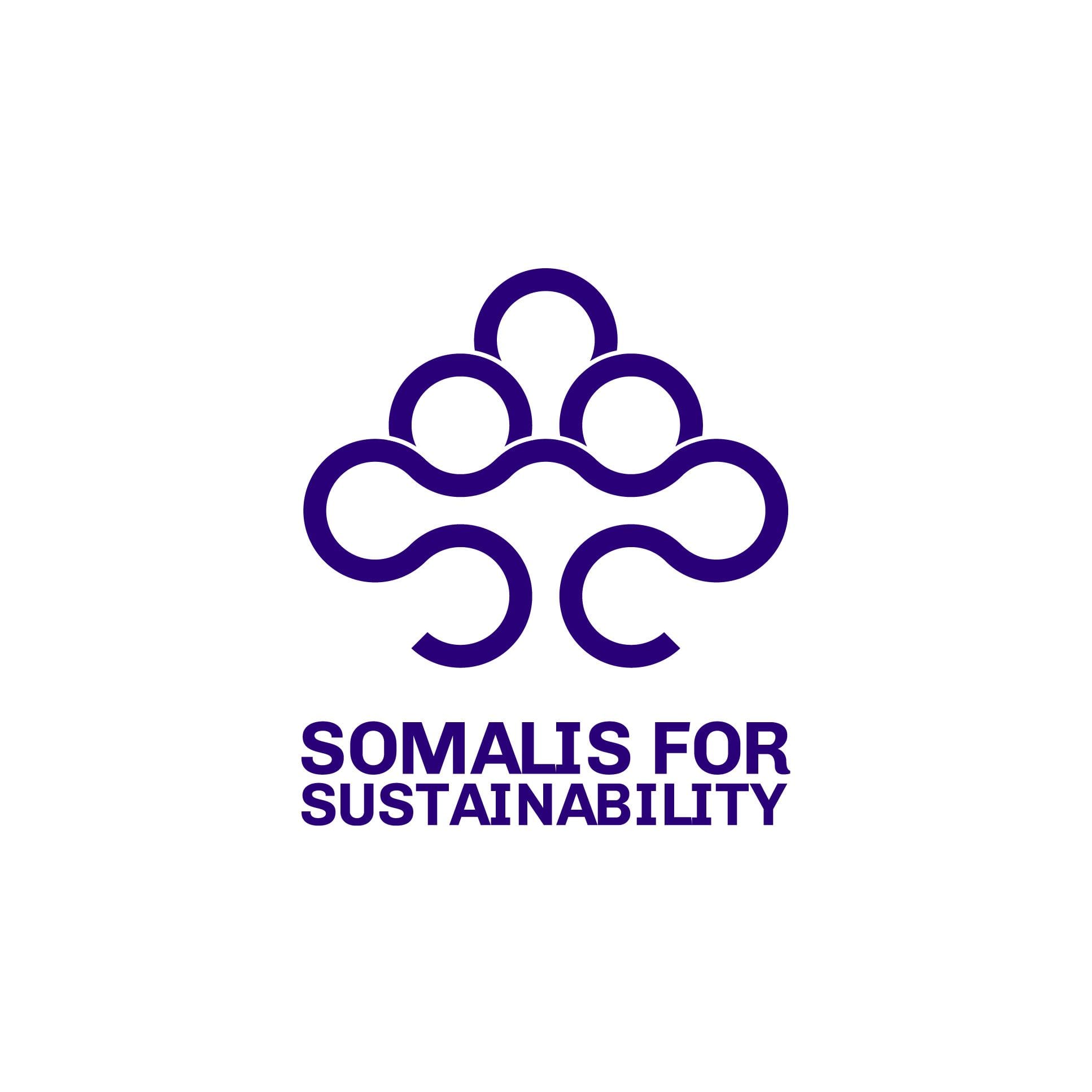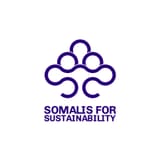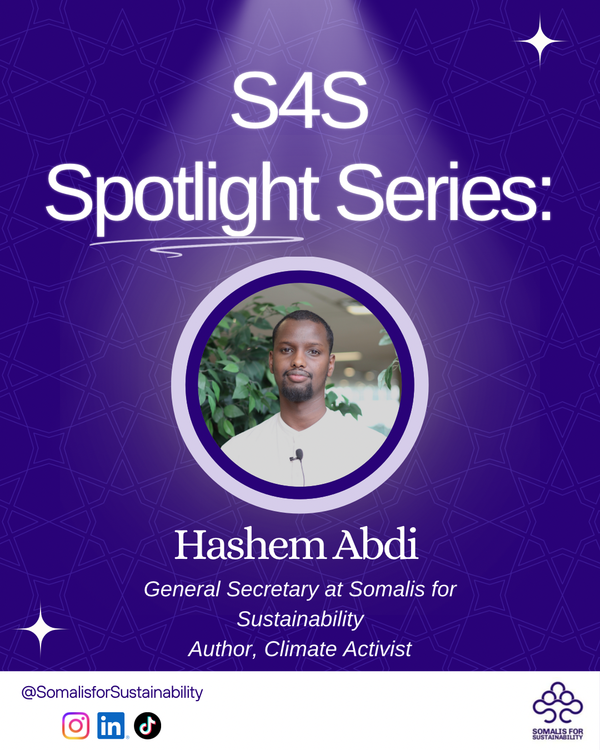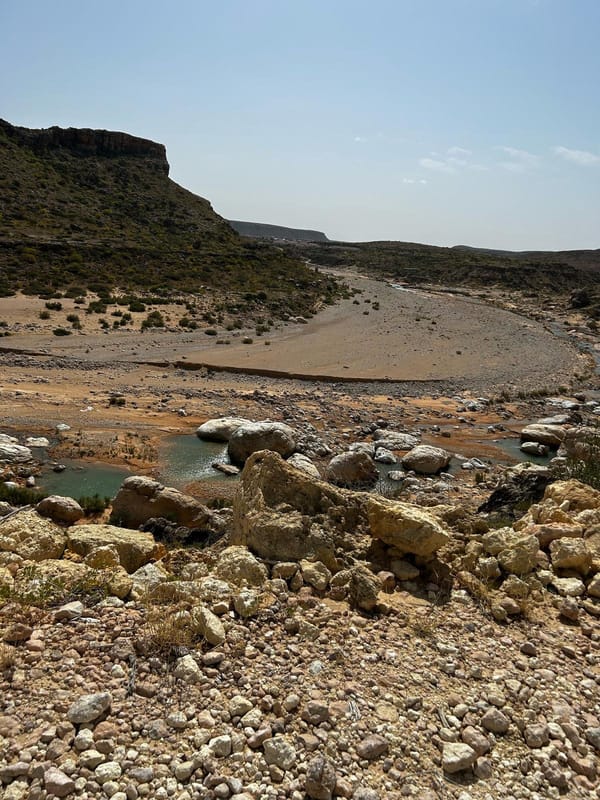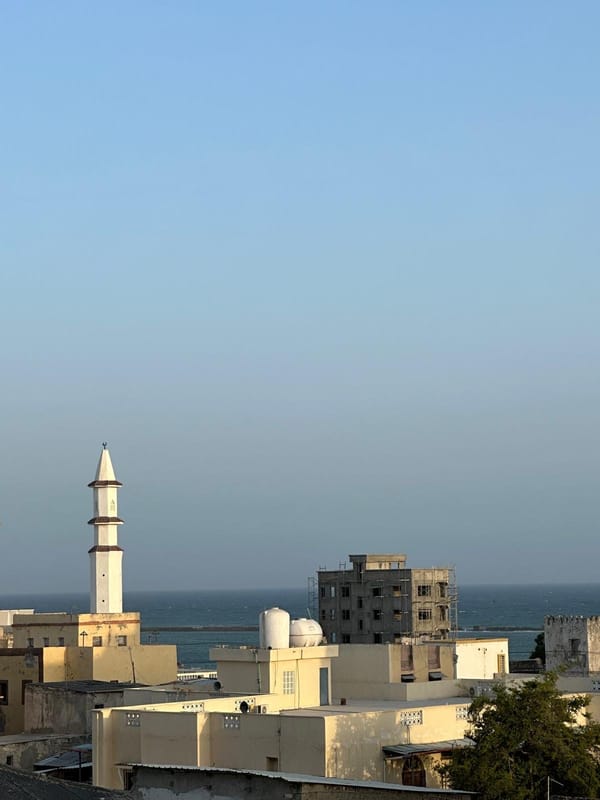Maydi Newsletter: October
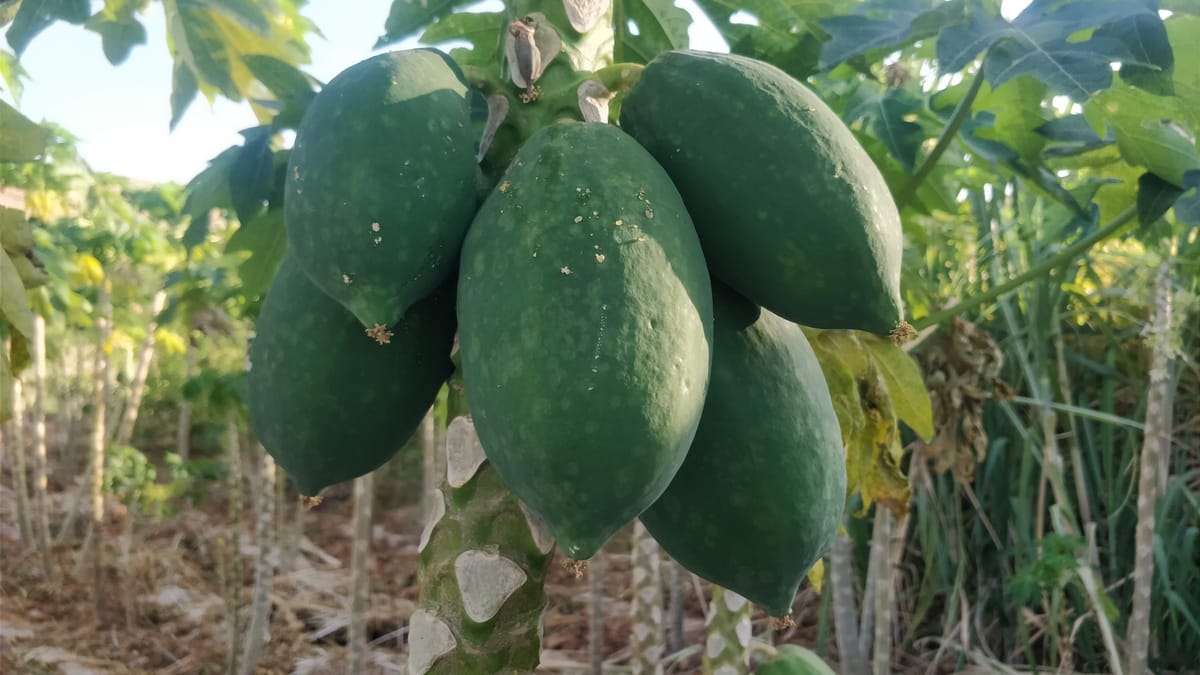
Hi everyone!
Welcome to this month’s edition of the Maydi Newsletter—your trusted source for the latest on sustainability in the Somali Horn. In this issue, we’re excited to share updates from our recent event and delve into key topics, including strategies for accessing climate finance and the urgent impact of forest loss in Somalia.
We're thrilled to announce that we now have over 100 subscribers 🎉! Thank you to all our readers—we hope you enjoy our content. Keep sharing, and let’s head down the road to 200! 🛣
S4S News
Somali Week x S4S: Climate Action and Stories from the Horn 🌍📚
On Saturday 19th of October, we held a panel at Somali Week titled "Somalis For Sustainability: Climate Action and Stories from the Horn." Our team—Zamzam, Amin, Iman, and Ridwan—introduced ourselves and framed the climate challenges that Somalia faces today. We focused on envisioning what meaningful climate action could look like and exploring how storytelling can drive these crucial initiatives forward. Storytelling is deeply embedded in Somali culture, with poetry, proverbs, and folktales serving as key ways to preserve history, share wisdom, and address community issues.
We then explored Maasiibadu waa Macalin, a Somali poetic drama written by renowned playwright Hassan Ganey. This connects Somali storytelling with critical themes like climate change and knowledge sharing, resonating with Somali audiences by using a culturally familiar, impactful medium. Looking at climate communication more broadly, there is a need to move beyond fear-based narratives, which can lead to hopelessness, and instead inspire action with hopeful, positive narratives. For instance, climate action can be seen as an exciting chapter of societal transformation, blending indigenous wisdom with new technology to build a sustainable future.
We were then joined by Mohammed Suleiman from Goodlight Energy, a leading provider of sustainable energy solutions in the Somali Horn. Goodlight’s work is a critical piece in the region's journey toward climate resilience, providing innovative solutions that are changing the landscape. Alongside Mohammed, we highlighted powerful stories of impactful work led by local communities across Somalia, aiming to shift the narrative and debunk the rhetoric that nothing is happening on the ground. Somali communities are actively engaging in sustainable projects and taking bold steps to address climate issues.
One of the key goals at Somalis for Sustainability is to act as a platform that connects and celebrates the many individuals and organisations driving change within the climate space. This event was a fantastic opportunity to showcase the incredible efforts currently underway in Somalia and to highlight those who often work without much recognition. The panel discussion ended with a lively Q&A, where the audience's engagement and curiosity underscored the Somali community's passion for climate action. Seeing people eager to learn, connect, and contribute to sustainability was inspiring.
We’re incredibly grateful to the Kayd team for inviting us to share these stories and experiences!
What is the latest in the Horn?
Uncovering the Loss of Green Cover in Somalia 🌳
Between 1990 to 2010, Somalia lost over 18.5% of its forest cover due to the limited forest land, the recurring drought, and the pastoralist communities' heavy reliance on vegetation. The main driver of the deforestation occurring in Somalia is the production of charcoal and fuelwood for energy the majority of Somali households rely on fossil fuels like charcoal and firewood for their cooking needs. Over 4.5 million trees are logged annually producing 250, 000 tons of charcoal posing a significant to Somalia's environment and population.
The process contributes to severe forest degradation, leading to soil erosion and desertification. These environmental impacts exacerbate climate variability, increasing the frequency and intensity of extreme weather events like floods and droughts. Environmental models predict Somalia will experience significant climate change, including rising temperatures and more extreme rainfall. This poses a major threat to the country's population, particularly nomadic communities who are highly vulnerable to these changes. Somalia's environment is already sensitive to temperature and precipitation variations, making it even more susceptible to the impacts of climate change. Despite having low CO2 emissions per capita, Somalia's deforestation rates are alarmingly high, contributing to climate change and further jeopardising its environmental and socio-economic stability.
A comparative study between Somalia and Northern Kenya from 2013 to 2021 found that vegetation cover Normalised Difference Vegetation Index (NDVI) in Somalia declined by 34%, while Kenya saw only a 12% decrease. Meanwhile, bare soil index (BSI) in Somalia increased by 116%, compared to 24% in Kenya. A brief recovery in 2019-2020 was erased by 2021. The study confirms that human activities are the primary drivers of forest loss, exacerbating soil erosion, desertification, and climate vulnerability, especially for pastoral communities.
Restoration efforts, such as Somalia’s 'National Regreening Initiative' and grassroots projects by Bisha Cagaaran, aim to combat deforestation. However, the article stresses the need for sustainable energy alternatives, improved governance, and public engagement to achieve lasting environmental recovery—aligning with the recommendations we developed in the Somali National Youth Statement for LCOY 2024.
Finding the Keys to Unlock Climate Finance in Somalia 🔓💰
Somalia is highly vulnerable to climate change facing severe impacts from increased droughts, floods and unpredictable weather patterns. These environmental challenges threaten food security, disrupt livelihoods and drive displacement. Despite recent progress through policies like the National Adaptation Programme of Action (NAPA) and updates to the National Climate Change Policy, Somalia faces significant financial shortfalls. Access to adequate climate financing remains limited, making it challenging for the country to build sustainable infrastructure and improve resilience.
This policy brief on climate financing in Somalia provides several key recommendations and outlines the significant barriers present. To improve climate resilience, Somalia needs resilient governance and institutional capacity by enhancing targeted training, technical assistance and capacity building to improve planning, implementation and monitoring of climate projects. It also requires collaboration among government agencies, donors, non-governmental organizations, and private sector stakeholders to ensure effective coordination.
Furthermore, effective monitoring and evaluation systems are necessary to ensure accountability and maximise impact, supported by data collection and standardised indicators from the Somali National Bureau of Statistics. Public-private partnerships (PPPs) are encouraged to fund essential infrastructure projects, such as renewable energy and resilient agriculture. Additionally, tapping into global climate funds can help alleviate financial pressures while advancing climate goals
However, Somalia faces major barriers to climate financing, including political instability, limited institutional capacity, and weak governance, which disrupt project implementation and effective resource management. Coordination issues and accountability challenges among stakeholders further hinder the efficient use of funds. Combined with limited access to global financing, these factors constrain Somalia’s ability to address its climate goals effectively.
In conclusion, addressing Somalia’s climate vulnerabilities requires a multifaceted approach, balancing immediate adaptation needs with long-term resilience strategies. Overcoming the barriers to climate financing is critical for Somalia to fully leverage international support and advance sustainable development. With strengthened governance, enhanced partnerships, and improved access to climate finance, Somalia can make meaningful progress toward building resilience against the adverse impacts of climate change and securing a sustainable future for its people.
Somali word of the month: Badweyn (baad-wayn) Ocean
The Indian Ocean off the coast of Somalia is a vital marine ecosystem with significant economic and strategic value. Its rich biodiversity, including extensive coral reefs, diverse marine life, and abundant fisheries, supports the livelihoods of coastal communities. The ocean's strategic location as a key trade route between East Africa, the Middle East, and Asia has made it a hub for maritime activity for centuries.
🗣 Upcoming events/ news:
🇺🇳 Somalis for Sustainability at COP29: Baku, Azerbjian 🇦🇿📍 11-22nd November
We are pleased to announce that our delegation will be attending this year’s UN Conference of Parties (COP) to support and advocate for the needs of Somali youth at the global stage. We’ll be in the Blue Zone, hosting side events on pressing issues facing the Somali Horn.
Please reach out if you're attending COP29 and would like to connect with us and stay up to date with our socials for more info 😄!
Enjoyed reading? If you haven't already, sign up below so you don't miss out on future content.
